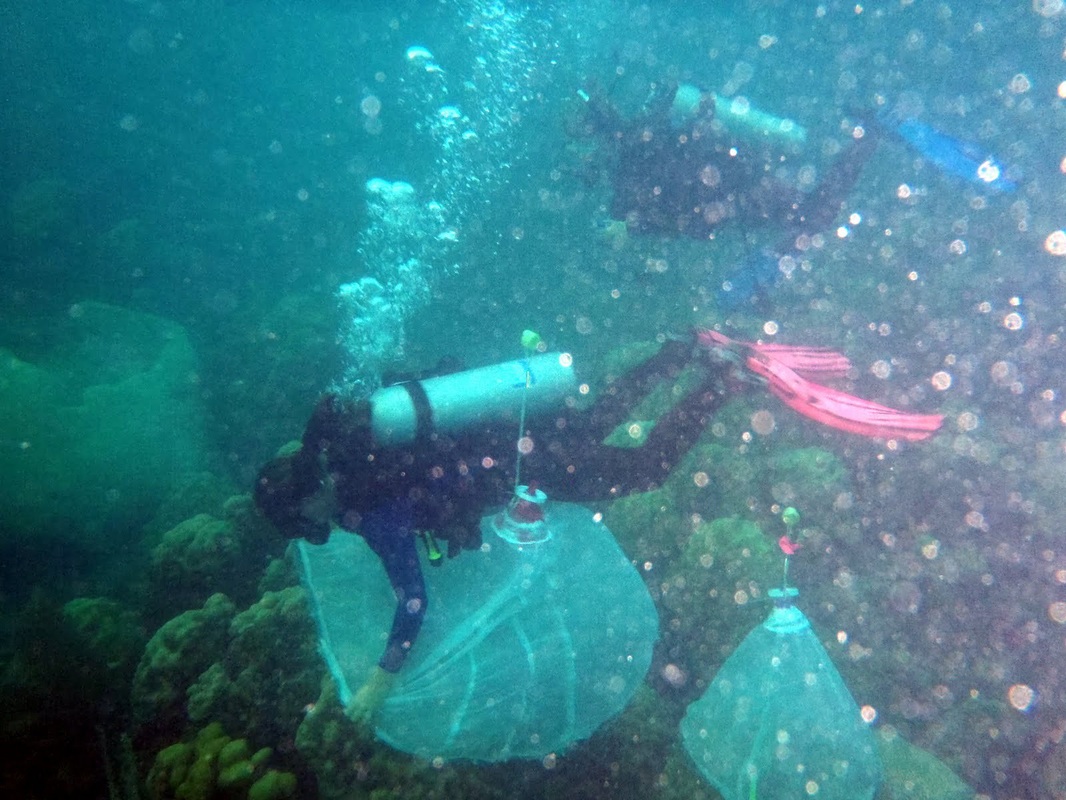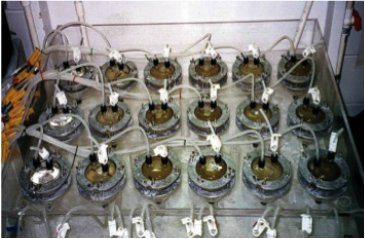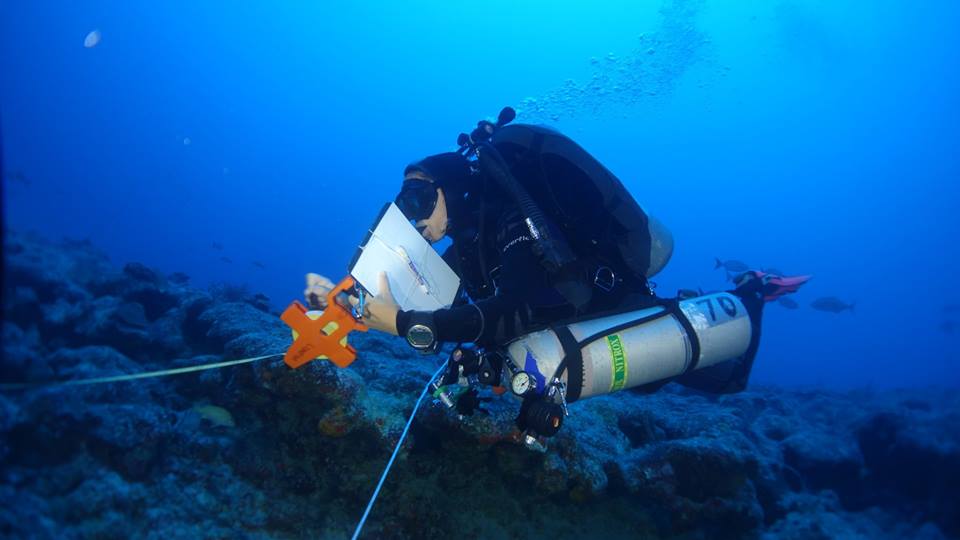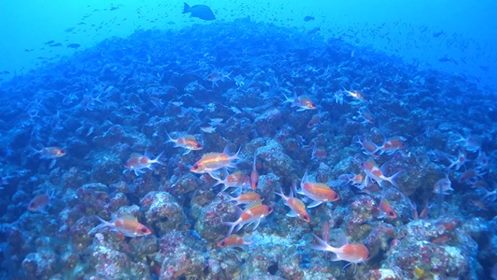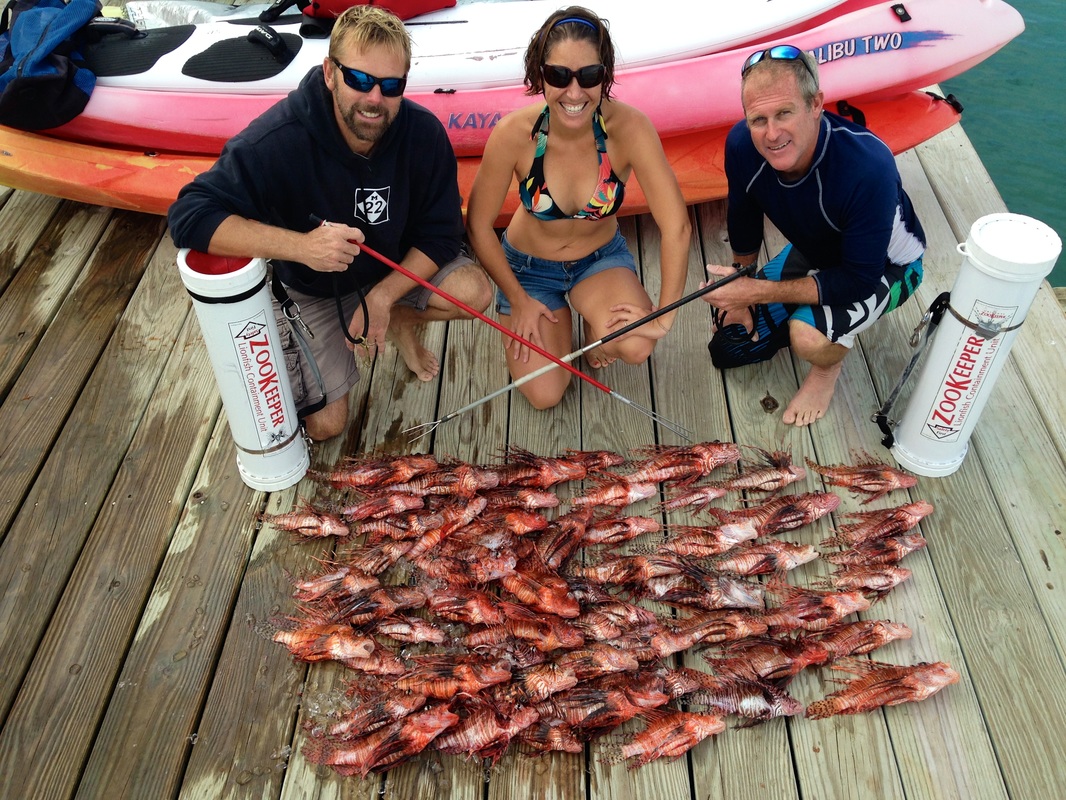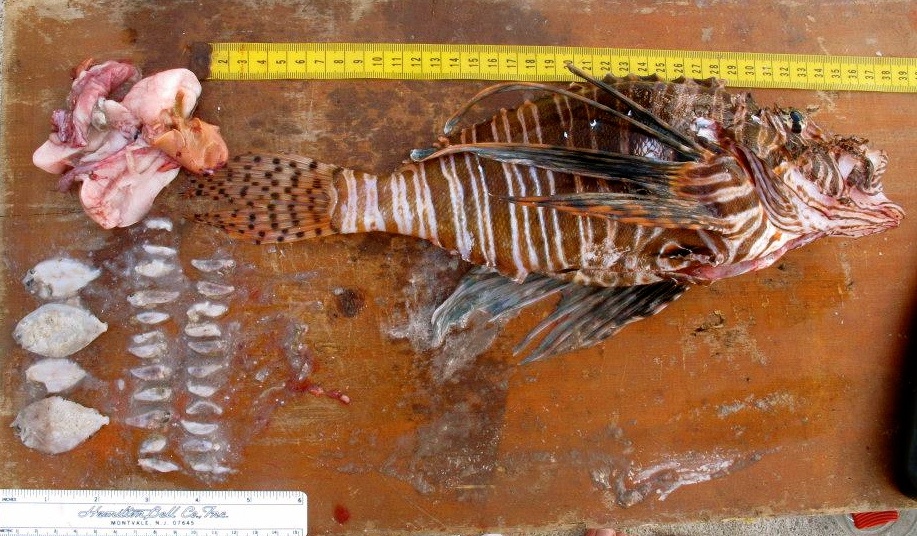|
Mesophotic BiodiversityPrevious technological limitations have presented major challenges to conducting research on MCE’s, resulting in limited understanding of their bathymetric and geographic extent and the biodiversity and community structure they support. Even basic taxonomic and systematic characterization of these communities is unknown, underscoring the importance of establishing baseline information on species assemblages and the roles they play in ecosystem function. Thus, a major focus of our research is exploration and characterization of MCEs in terms of biodiversity, species composition, community structure, and connectivity. Using open and/or closed circuit (Hollis Prism2) mixed gas diving technologies we conduct visual and video surveys, take benthic quadrat photos, and collect specimens for identification and further analyses.
Photo credits (right: upper and lower) to California Academy of Sciences |
|
Photo credits (above: upper and lower) to Ocean Support Foundation
|
|

